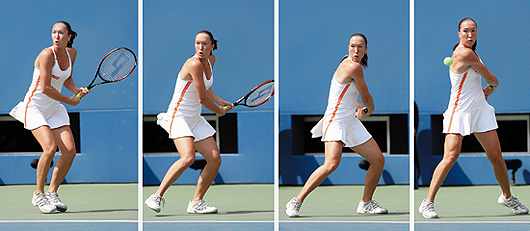You’ve been working hard on your serve, only to have to sit out your next tennis match because of back pain. While you may be in pain, you’re certainly not alone; tennis injuries, especially back pain, are common (even in the pros) and can range widely in their level of severity.
The rotation needed to switch between backhand and forehand can wrench muscles in the low back, leading to acute pain. Serving is also a major culprit when it comes to back pain in tennis players because the hyperextension puts stress on the foot joints and disc. More serious problems include herniated disc or degenerative disc disease and stress fractures can occur a condition more common in younger players.
As always, an ounce of prevention is worth of a pound of cure. Stretching before play is key, as is finding the right racket and proper shoes for shock absorption. Players new to the game as well as those who have been playing for years should make sure their form is correct — with knees bent and abdominal muscles contracted. Also, make sure to use the first ten minutes on the court as warm-up time before playing hard. Those modifications are important for protecting the back and spine.
If you’re already experiencing back pain, there’s plenty you can do at home. Rest, ice, and ibuprofen are the first steps. But don’t sit out too long because that will be worse for your muscles in the long run. Next, be sure to stretch your low back muscles. To prevent further injury, focus on building up your core to protect your back. Consider mixing in a swimming program to build up the lower back and core. Remember, when doing the stretches and strengthening exercises that muscle soreness is normal but you should stop or modify what you’re doing if you experience joint pain. When easing back into the game, experts say you should consider playing on clay, indoor, or even grass courts rather than concrete ones. Those surfaces tend to put less strain on the back and joints.
If you’ve made all these modifications and there’s still no decrease in your back pain, or if the pain is accompanied by shooting pain in the leg, tingling or numbness, please consult a physician.










